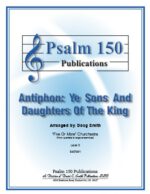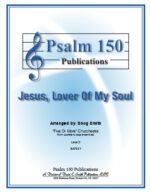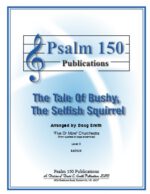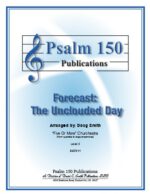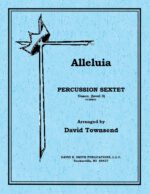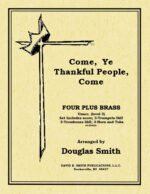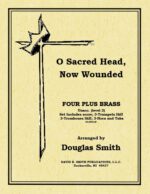-
Violin Hymns & Obbligatos Volume 3
$21.95Two staff systems with the hymn tune and obbligatos included. Patriotic and Folk songs.
-
Violin Hymns & Obbligatos Volume 2
$21.95Two staff systems with the hymn tune and obbligatos included. Traditional and Gospel songs.
-
Violin Hymns & Obbligatos Volume 1
$21.95Two staff systems with the hymn tune and obbligatos included. Hymns for the Church year.
-
Duets Based On Hymbook Harmony (CD)
$9.95Organ accompaniment for the “Duets Based on Hymnbook Harmony” books
-
-
-
-
-
-
-
Antiphon: Ye Sons and Daughters of the King
$35.00(in manuscript at this time)Arrangements in a flexible format, playable by smaller groups such as brass or woodwind quartet or quintet, with piano, or larger groups, such as concert band or full orchestra. Strings-optional & piano part included.
-
Jesus, Lover Of My Soul
$27.50(in manuscript at this time)Arrangements in a flexible format, playable by smaller groups such as brass or woodwind quartet or quintet, with piano, or larger groups, such as concert band or full orchestra. Strings-optional & piano part included.
-
The Tale of Bushy, The Selfish Squirrel
$45.00(in manuscript at this time)Arrangements in a flexible format, playable by smaller groups such as brass or woodwind quartet or quintet, with piano, or larger groups, such as concert band or full orchestra. Strings-optional & piano part included.
-
Jubilee: Peter, Go Ring Dem Bells
$7.95(in manuscript at this time)Arrangements in a flexible format, playable by smaller groups such as brass or woodwind quartet or quintet, with piano, or larger groups, such as concert band or full orchestra. Strings-optional & piano part included.
-
Jubilee: Peter, Go Ring Dem Bells
$35.00(in manuscript at this time)Arrangements in a flexible format, playable by smaller groups such as brass or woodwind quartet or quintet, with piano, or larger groups, such as concert band or full orchestra. Strings-optional & piano part included.
-
Chaconne on NEUMARK
$35.00(in manuscript at this time)Arrangements in a flexible format, playable by smaller groups such as brass or woodwind quartet or quintet, with piano, or larger groups, such as concert band or full orchestra. Strings-optional & piano part included.
-
Passacaglia on KIRKEN (in F)
$35.00(in manuscript at this time)Arrangements in a flexible format, playable by smaller groups such as brass or woodwind quartet or quintet, with piano, or larger groups, such as concert band or full orchestra. Strings-optional & piano part included.
-
Forecast The Unclouded Day
$35.00(in manuscript at this time)Arrangements in a flexible format, playable by smaller groups such as brass or woodwind quartet or quintet, with piano, or larger groups, such as concert band or full orchestra. Strings-optional & piano part included.
-
-
All Creatures/Our God And King
$9.95Four Plus Brass Series- for two Trumpets and two Trombones (with opt. Horn and Tuba for color). In Alla breve the trumpets begin the piece in exultation with counter-movement in the trombones passing through a maze of meter changes. The theme tends to be insolated by part, but does exchange between the voices in an imitative format. This format continues, only in a more harmonically full scoring. The second section is stronger in fabric and the voicing becomes more solid. This all leads up to a solid conclusion with a final statement of satisfaction.
-
Count Your Many Blessings
$9.95Four Plus Brass Series- for two Trumpets and two Trombones (with opt. Horn and Tuba for color). Beginning with a tempo and style of vitality the introduction uses motivic repetitions until the trombones establish the tune with trumpet counterpoint. The rest of the whole first section is an exchange of thematic motives amongst the parts. With a modulation the trumpets present a little duet with the trombones adding brief flourishes. The final section again presents melodic motives passed around the various voices and then slows to a strong conclusion.
-
Come, Ye Thankful People, Come
$9.95Four Plus Brass Series- for two Trumpets and two Trombones (with opt. Horn and Tuba for color). With excited anticipation the piece breaks forth with imitative motives until it settles down to the first statement of the theme. It continues in a rather straight forward manner with constant interplay of the parts. It gains strength and progresses through various harmonic stages until it relaxes to a softer, slower statement of the theme in the trombones. The final section is reminiscent of the earlier theme until in relaxes into a final statement.
-
O Sacred Head, Now Wounded
$9.95Four Plus Brass Series- for two Trumpets and two Trombones (with opt. Horn and Tuba for color). Without any introduction the piece begins in four-part harmony and in a deeply reflective expression. As is the original, there are many meter changes. The second section is carried exclusively in the trombones until it is taken over by muted trumpets until consummated with harmonic divergence. The final section is established by the trumpets with subtle underpinning by the trombones. With one final strong presentation of the tune the piece concludes in repose- as one might expect.


